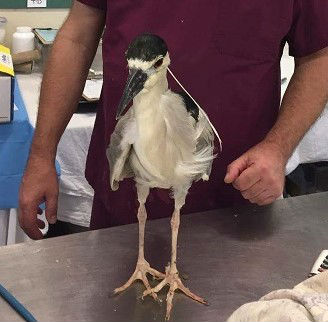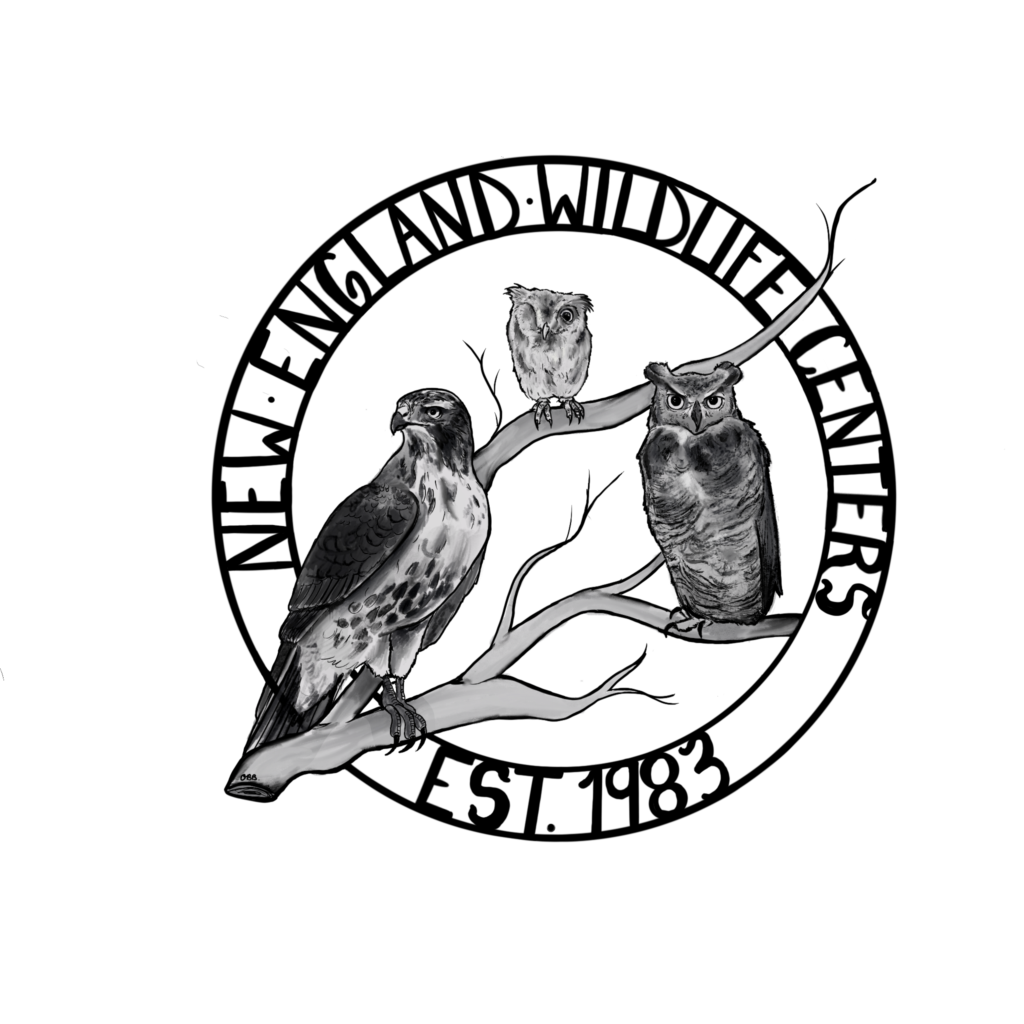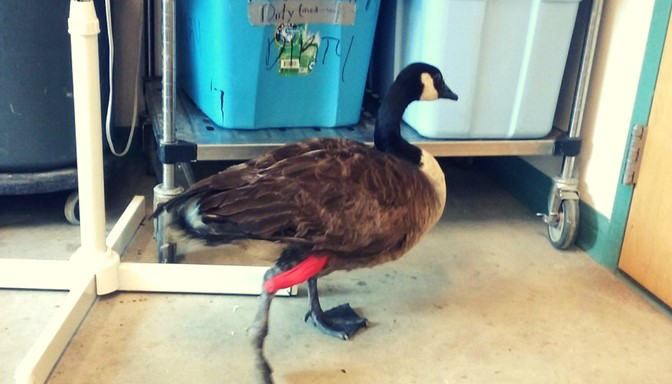Answers to frequently asked question from visitors to help you learn about wildlife
When a Canada goose was brought to our wildlife hospital in April, the bird’s badly broken leg was its most obvious injury.
But further tests revealed, the Canada goose also had lead poisoning.
“Over a quarter of our medical time and resources goes to treating lead poisoning in birds and mammals,” says Dr. Greg Mertz, wildlife veterinarian at NEWC’s wildlife hospital.
The black-crowned night heron at our hospital picture here also has lead poisoning.
A kind citizen from Hingham found the heron in Great Esker Park – a place where herons are frequently spotted because it’s an estuary.
Lead is a well-known toxin to humans. It became a major topic nationally following the catastrophe in Flint, Michigan, when lead contaminated public drinking water. Many communities in Massachusetts have also found lead in public school drinking fountains.
Visitors to the NEWC and our Facebook fans are often surprised to learn that local wildlife is also at risk for lead exposure and poisoning.
We get a lot of questions about lead—which we’re happy to answer to help people learn more about wildlife!
Here are our answers to three of the most frequently asked questions we get from visitors to the center:
#1: What Happens to Animals Suffering from Lead Poisoning?
Lead poisoning in animals damages the brain and GI tract. It can cause altered behavior and other neurological problems. Many animals suffering from lead poisoning die as a result.
Unfortunately, the number of animals suffering the effects of lead poisoning is on the rise nationwide.
National Public Radio recently did a story on the impact lead poisoning is having on the American bald eagle population in the Great Lakes region.
#2: How is Wildlife Exposed to Lead?
Lead left over from paint, gun shot, fishing tackle, and leaded gasoline remains in the environment for decades. It gets into the water in ponds, rivers, and habitats, and can be ingested directly by drinking water or indirectly by eating prey that was exposed to lead.
Symptoms of lead poisoning can vary by species. Animals become skinny because they do not eat well, and they have vomiting and diarrhea
#3: How Do You Treat Animals with Lead Poisoning?
Birds and animals receive chelation therapy to remove the toxic levels of lead from their systems. They must remain at the hospital under close care and supervision while they receive the therapy to address any possible side effects and complications.
“Providing Chelation Therapy for wildlife is a very intense process,” says Dr. Mertz. The therapy can last anywhere from one week to 4 months or more.
The Canada goose with the broken leg responded well to chelation therapy and is almost ready for release back into the wild. Our hope is the heron will also recover and return home sometime in the Fall.
How You Can Help Wildlife!
YOU MAKE THIS IMPORTANT WORK POSSIBLE! NEWC doesn’t receive federal or state funding to care for wildlife suffering from lead poisoning. We need your help to do it! DONATE NOW
And to get the latest updates on wildlife receiving care at NEWC and educational information, follow us on Facebook or subscribe to our Wild Update email list.


